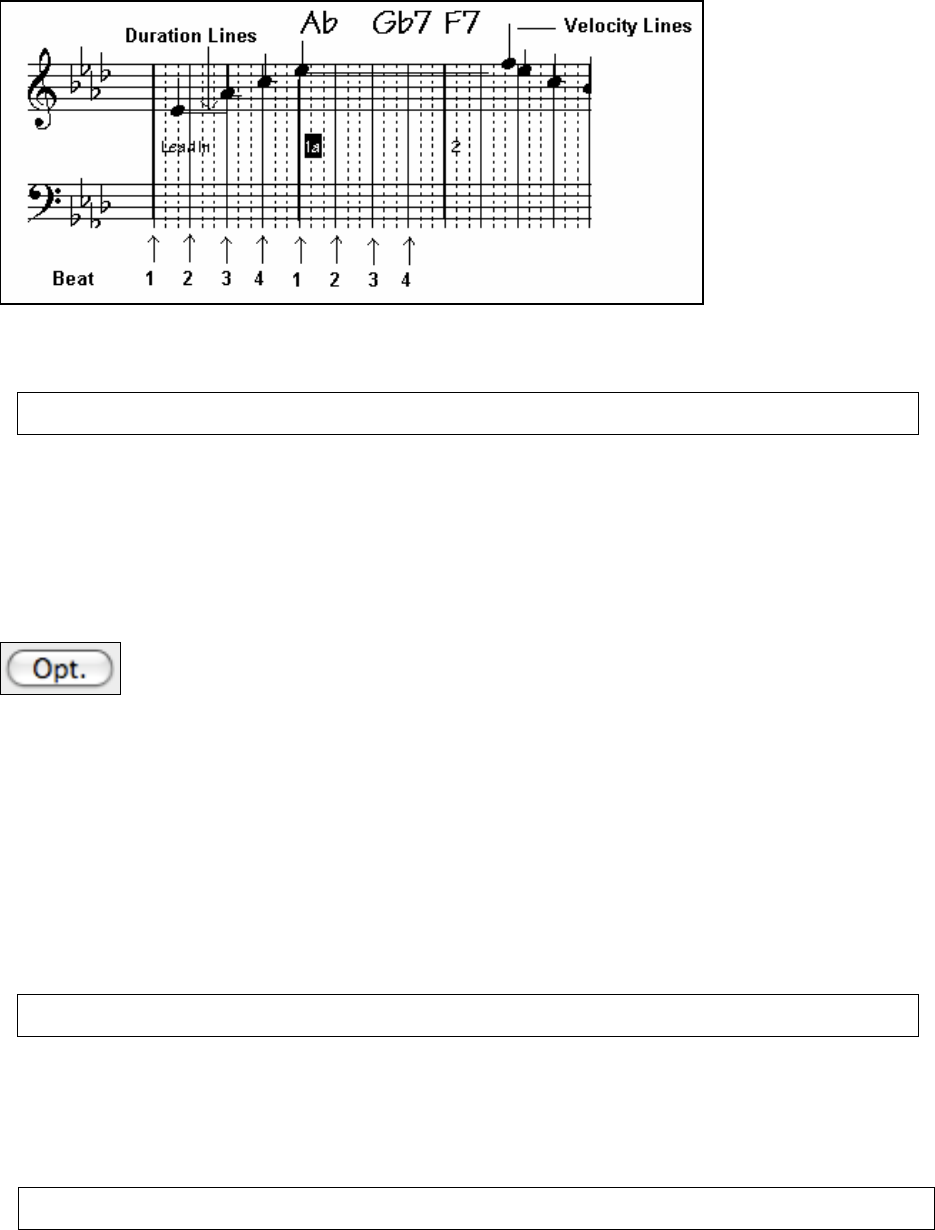User Guide
Table Of Contents
- PG Music Inc. License Agreement
- Table of Contents
- Chapter 1: Welcome to Band-in-a-Box!
- Chapter 2: QuickStart Tutorial
- Chapter 3: Band-in-a-Box 2010.5 for Macintosh
- Welcome to Band-in-a-Box 2010.5
- New Features in Band-in-a-Box 2010
- More New RealTracks
- QuickStart Tutorial
- Quick Song Settings
- Save Default Mix
- Improved Audio Rendering
- DAW Plug-in Mode
- Freeze Tracks
- RealTracks Enhancements
- New Favorite Songs/Styles Dialog
- Rendering Tracks
- StylePicker Enhancements
- New in the StyleMaker
- Chapter 4: The Main Screen
- Chapter 5: Guided Tour of Band-in-a-Box
- Chapter 6: Band-in-a-Box PowerGuide
- RealTracks
- RealDrums
- Song Settings
- The Chordsheet
- Chord Preview/Builder
- MIDI file “Chord Wizard”
- Applying Styles
- The StylePicker
- Playing, Pausing, and Stopping Songs
- Changing Volume, Panning, Reverb, Chorus, Bank
- Freeze Tracks
- Saving Songs
- Preferences – User Settings
-
- Show Chords with push/rest chars
- Metronome During Recording
- Harmony Volume Adjust
- OK to Load Style with songs
- Write Guitar part on 6 channels
- Turn External Keyboard’s Local On at end of session
- OK to beep with messages
- OK to prompt to reduce/expand
- For Roman Numerals in minor keys, use relative major
- Save Button on main screen works as Save As
- Name MIDI files with .MID extension
- Allow larger fonts on Chordsheet
- Color for Chordsheet Area
-
- Other Editing Features
- MIDI Setup
- The JukeBox
- Chapter 7: Notation and Printing
- Chapter 8: Automatic Music Features
- Chapter 9: Recording Tracks
- Chapter 10: Audio Features
- Chapter 11: Wizards, Tutors, and Fun
- Chapter 12: User Programmable Functions
- Chapter 13: CoreMIDI and Apple DLS Synth
- Chapter 14: Reference
- PG Music Inc.
- Index
- Registration Form

Chapter 7: Notation and Printing
142
This mode is similar to the Editable Notation mode, except the beats begin right on the bar line. You can also see
the durations of the notes visually, represented by horizontal blue lines. Similarly, you can see the velocities of the
notes displayed as vertical blue lines.
Note: If you can't see these lines press the [Opt.] button to ensure that you have set the “Show Bar/Beat Lines,” “Show
Note Durations,” and “Show Velocity Lines” to “Yes.”
This mode works like the Editable Notation - you mouse click to insert a note, and can drag notes horizontally or
vertically, and edit notes by pressing the Mouse while holding the option key.
Option key mouse drag of velocity or duration.
There is an additional function available in this mode: Option+Mouse Drag. Hold down the option key, then place
the mouse cursor on the note head and drag it horizontally to the right to set the note's duration. Use the same
procedure to set velocity, but drag the mouse vertically from the note head.
Notation Options
Use the Notation Options to format your notation display and choose which elements of the
notation to display or hide. Press the [Opt.] button in the Notation window toolbar to open the
Notation Options dialog.
Resolution Setting
Band-in-a-Box automatically sets the resolution whenever a style is loaded. If a style has a triplet feel (such as Jazz
Swing or a Shuffle style), then Band-in-a-Box will set the resolution to “3 (swing).” This will ensure that Jazz
eighth notes (swing triplets) are handled correctly. When a “straight” style like Bossa Nova is loaded in, Band-in-a-
Box will change the resolution to sixteenths notes. This will provide even eight notes. You shouldn't have to
change this setting very often, as Band-in-a-Box sets it for you.
The “Resolution” setting determines how the program rounds the note times and durations when translating a track
into standard notation. For example, a resolution of 4 will cause the program to round each note and duration to the
nearest 16th note when displaying the music (in 4/4 time). A resolution of 3 will cause Band-in-a-Box to round each
note to the nearest 8th note triplet (in 4/4 time). A resolution of 2 will cause BB to round each note to the nearest
8th note (in 4/4 time).
Tip: If you're displaying Jazz Swing or Shuffle music that has a triplet feel to the eighth notes, make sure to set the
resolution to = 3(swing). This will display the 8th notes and other aspects of Jazz Swing music correctly.
Tick Offset
The “Tick Offset” on the notation options is one of the keys to great looking notation. It accounts for playing that is
before or behind the beat. The track is automatically scanned to determine the tick offset so that you don't have to
set this yourself. This results in better looking notation.
You may change this setting, but normally Band-in-a-Box will determine the best tick offset automatically.
Tip: The notation of Jazz Swing music will often be improved by a Tick Offset setting of about minus 5. This is because Jazz
music is typically played a little after the beat or, in Jazz terms, “laid-back.”










